Pawnee Indian Museum
In about 1820, on a hill overlooking the Republic River valley in north central Kansas, a group of about 1000 Pawnee Indians built a village consisting of 30 to 40 earth lodges.
A wall surrounding the village was built to provide protection from the Pawnee’s ememies, the Kaw and Osage Indians. The village owned thousands of horses and dogs, and the Pawnee Nation was the major power on the central plains. Their territory ranged from central Kansas north into Nebraska, and included large areas of the high plains to the west, an area where the largest buffalo herd in the country roamed. The Pawnee men hunted game to provide food for the village, and also engaged in battles with their enemies.
Young women raised their children only until they were weaned, and then the child rearing was left first to grandparents or other elders of the tribe. As the children grew older, their upbringing was supervised by their aunts. It was not that their mothers did not love them, it was a matter of not having the time to raise them. Women were responsible for tending gardens along the river, preserving food, making clothing, building the earth lodges, and many other tasks.
Also, with so many adults looking after the children, no child was ever left alone or orphaned. Everyone knew his place and responsibilities so there was no need for a system of law, except during the annual buffalo hunts in the summer. Anyone who interfered with the hunt could be severely punished.
In about 1830, only 10 years after the Pawnee had moved here, they moved on. The land had become unproductive, and wood scarce. They abandoned the earth lodges, and moved north near other bands of Pawnee. About 20 years later, the village burned to the ground. Decades passed. Prairie grass grew over where the lodges had stood, now only depressions in the ground indicating where they had been. The land where the village had been passed into private ownership by settlers in the late 1800s, was then donated to the state of Kansas in 1901, and it became a state historic site. Some of the former lodges were excavated in the 1940s, but no formal scientific excavation was done until 1965. In 1967, a museum was built over the location of one of the lodges.
It was built to resemble the lodge itself – a round building with a domed roof, and an east facing doorway.
Today, visitors can view the excavated floor of the lodge.
Holes in the dirt mark where the support poles for the lodge stood.
Charred remains of the poles themselves remain where they fell after the lodge had burned.
Other artifacts are left where they were found on the floor: charred corn,
a buffalo skull used in religious ceremonies,
tools, shards of pottery, and many other items.
Other artifacts on display in the museum include: clay pots,
tools,
a child’s toy,
and a scale model of an earth lodge with a cutaway showing how the lodge was constructed.
Harland(hubby) and I enjoyed our visit to the museum when we were there last Saturday, as part of our weekend north-central Kansas roadtrip. We learned much about the Pawnee and their vanished way of life.
If you are interested in learning more about the Pawnee Nation, or about the Pawnee Indian Village museum, you can visit their site here.
After our visit to the museum last Saturday, we hit the road and made our way to Cawker City, KS, home of the World’s Largest Ball Of Twine. I’ll have a post about it soon.
~~~~~~~~~~~
[ad name=”Google Adsense”]

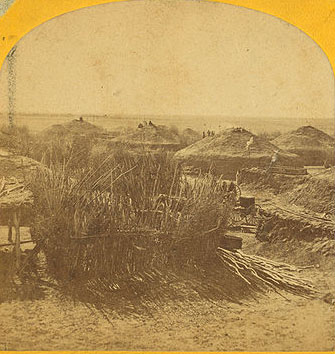
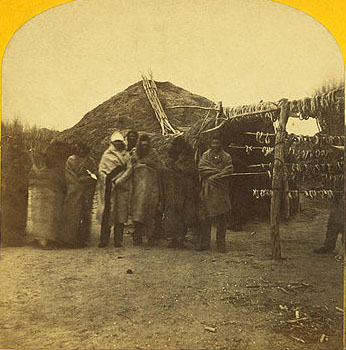
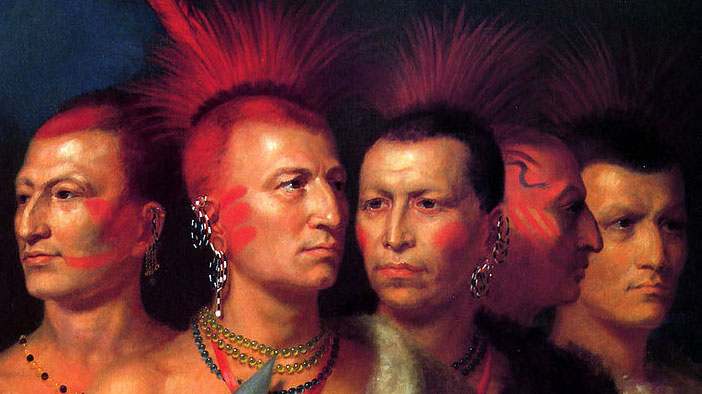
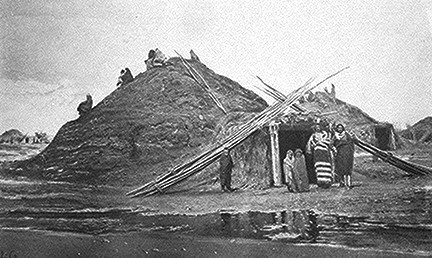
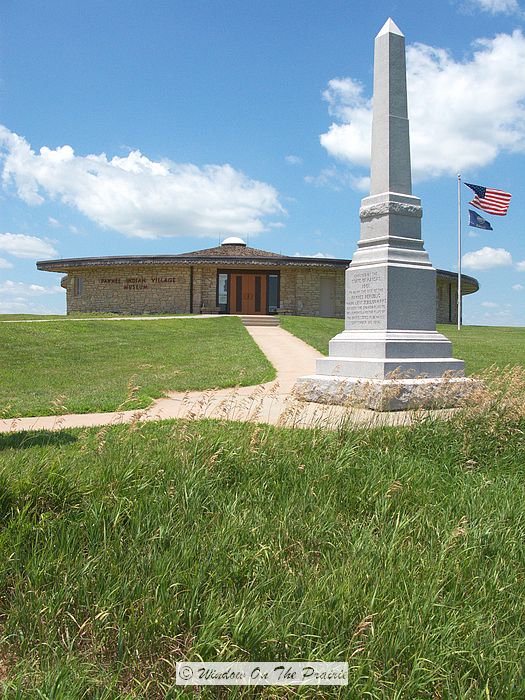
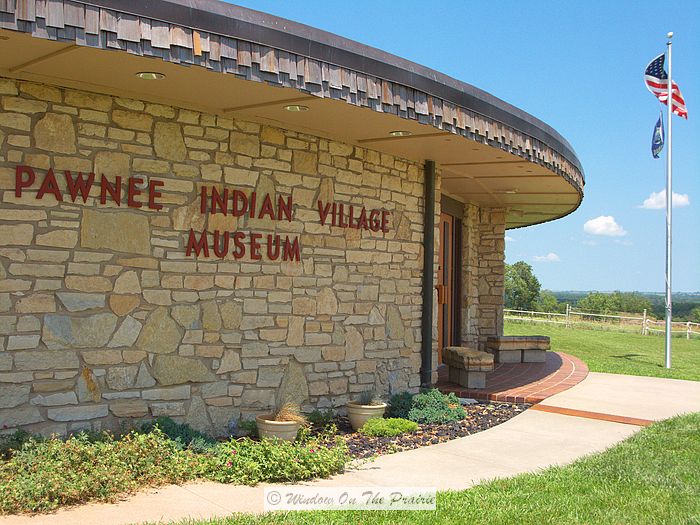
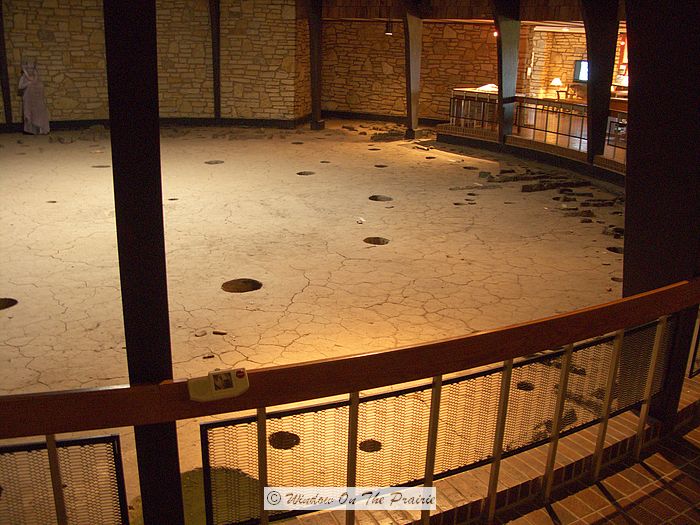
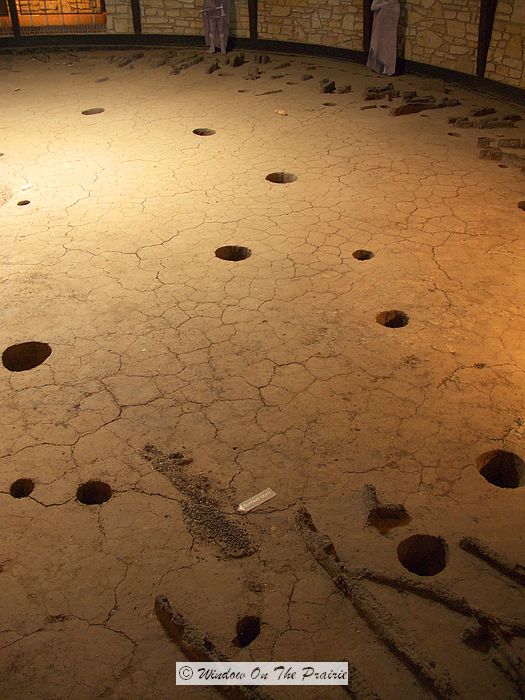
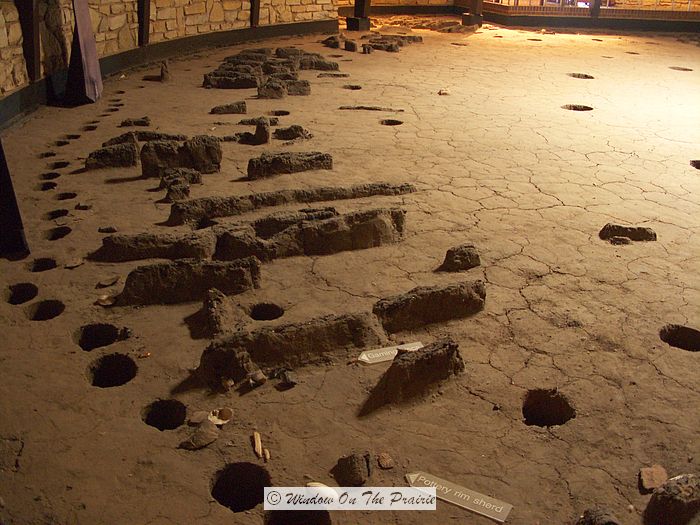
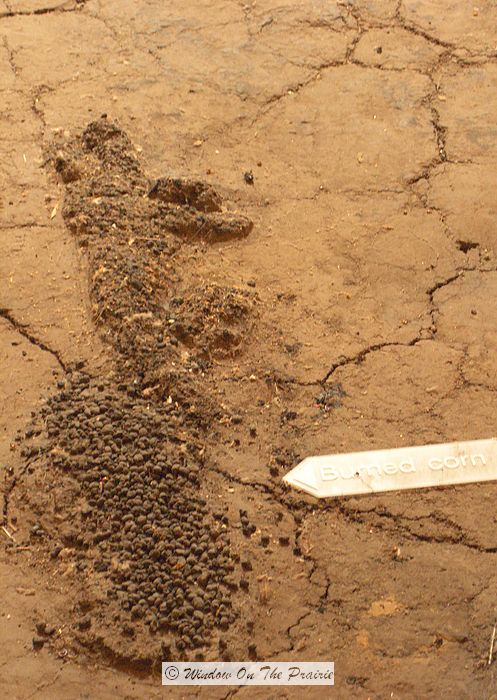
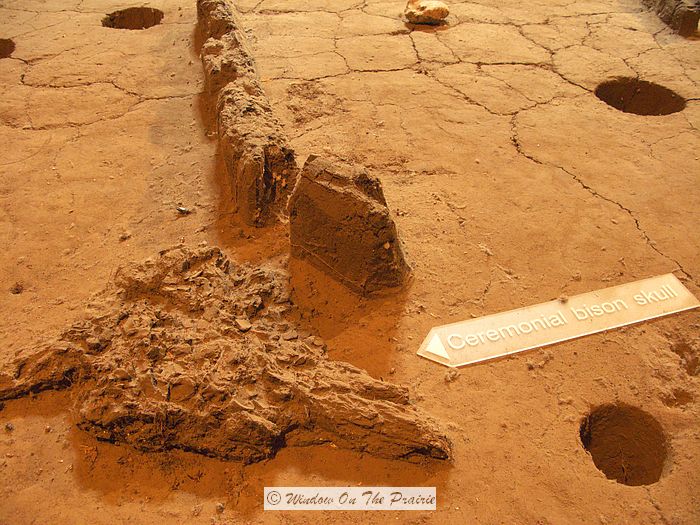
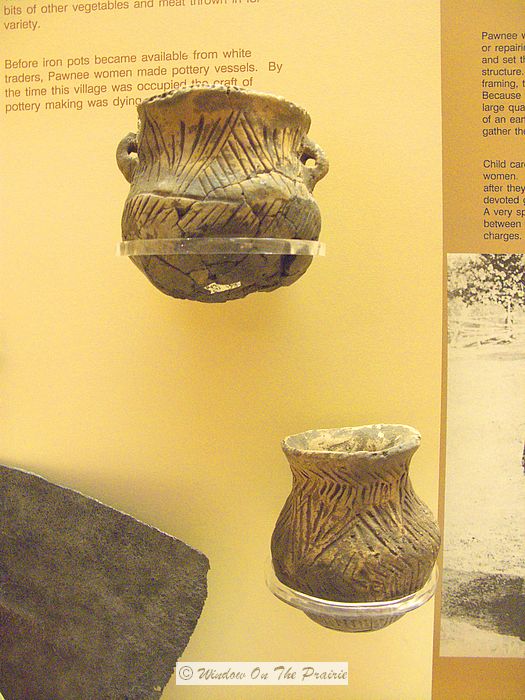
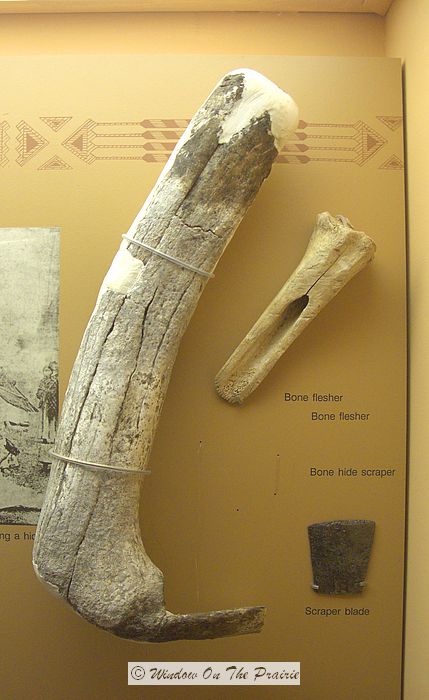
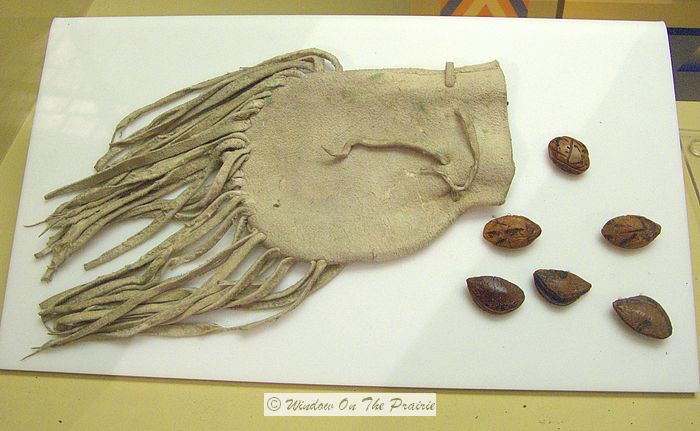
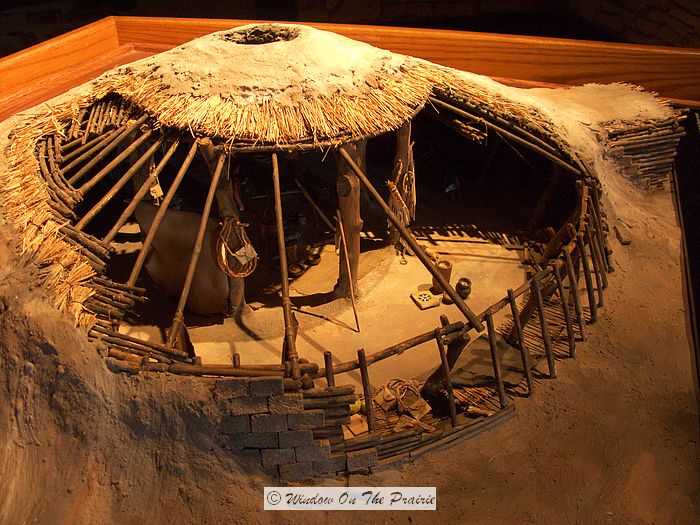
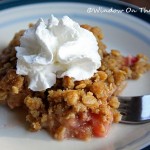
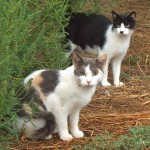
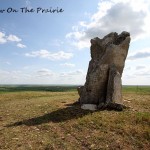

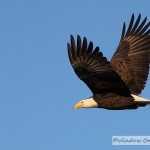
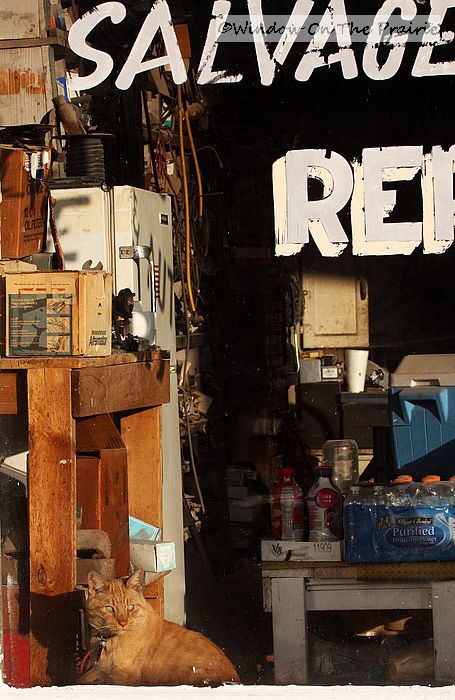
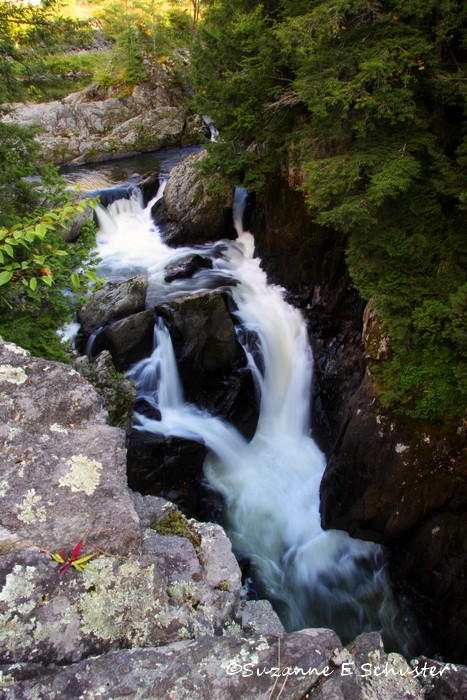
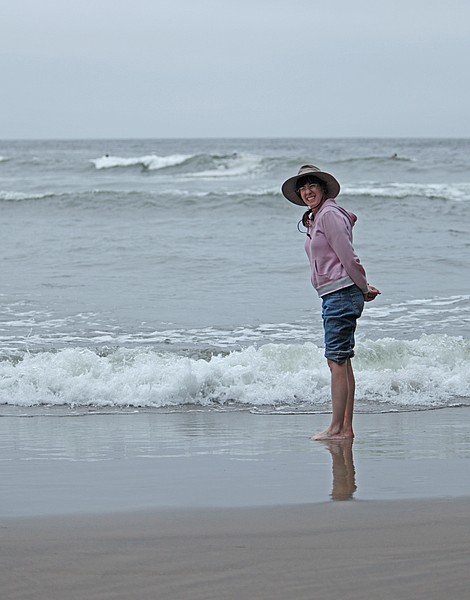
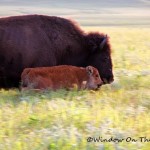
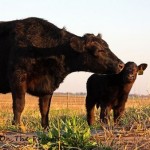
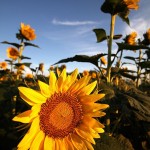
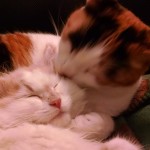






Wow! What an interesting museum. I love the floor with all the holes from the poles. Pretty neat that the stuff was just left where it was found!
Hi Bonnie,
It’s unusual that it’s all been left where it was found. Pretty neato.
I’ve learnt something new! I had only heard of the teepees and adobes so far. Were all earth lodges built to face the east?
Hi Shailaja,
All the earth lodges’ doorways faced east. Their religion included worship of the sun and stars.
Fun trip!! My kids like hunting for arrowheads when we go visit my folks on the east side of the Flint Hills. They would really enjoy that museum!! Thanks for sharing!
Hi Melanie,
You’re welcome, and thank you for stopping by.
How I love history! Thanks for sharing. Will be back for your next post!
Kristina
Hi Kristina,
Thank you!
Although the museum looks small but it a good and nice place to be – very educational!
Hi Stephanie,
It’s not a big building, but it is just the right size to show what the earth lodges were like.
Thanks for visiting.
Enjoy your site. I love history. Do you use WordPress for blogging and are you pleased? I am considering starting a blog about living in a tiny hamlet here in TN. So much history here and so many funny things happen. Are you aware of any other blogs about tiny towns?
Hi Glyndalyn,
Thank you! I do use wordpress and have been very happy with it so far.
This place looks so amazing. The pictures are stunning.
Thanks for sharing,
Tes
Hi Tes,
Thank you!
I am loving this series about your trip. All these places are “home” to me since I grew up in that area. I remember the Pawnee Museum from school fieldtrips, but have never been there as an adult. I think we should schedule that next time we’re up that way. Also, loved the pictures of the Willa Cather prairie. Sometimes I forget what it looks like to see miles and miles of green.
Hi Tami,
You are so very welcome!
This was fascinating, and helpful for me. I’ve been researching for a book I’ll write (eventually) about my family emigrating to Kansas in 1874. One of my main naratives will be exploring native cultures prior and during plains settlement. Cool. I’ll have to head here.
Wow I know I said it again Wow so far that is all I can say when I read you blog and see your pictures. I so enjoy it.
Thanks
THANK You, Aletha!